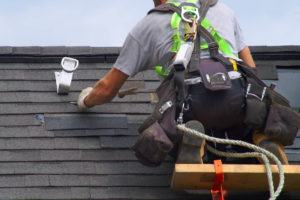Workplace Safety Topic
Fall Protection
The biggest causes of falls on the job are tripping hazards, awkward positionings and openings in floors—all of which sound somewhat minor until you consider the heights at which some workers perform their jobs and the weight they carry in tools and equipment. A fall from even 6 feet can mean 2,400 pounds of force on the body.
The good news is that most falls can be prevented by removing work environment hazards, using good judgment and using appropriate fall protection. In fact, fall protection is required on job sites where someone is working more than 6 feet off the ground. Whether the job at hand calls for guard rails, netting or harnesses, implementing a written fall protection plan (more help on that below) can avoid costly work interruptions and devastating personal injuries.
MORE SAFETY VIDEOS
Getting Started:
 No matter the heights your business requires workers to go, falls are a common workplace risk. Even more traditional office workers, who don’t regularly scale heights but navigate other tripping hazards, aren’t immune. Fall protection is very industry-specific, but you can begin now by looking around and considering some basic questions to uncover the biggest threats:
No matter the heights your business requires workers to go, falls are a common workplace risk. Even more traditional office workers, who don’t regularly scale heights but navigate other tripping hazards, aren’t immune. Fall protection is very industry-specific, but you can begin now by looking around and considering some basic questions to uncover the biggest threats:
- Inspect the work area to determine what hazards exist or may arise.
- Consider what immediate steps can be taken to remove those risks.
- Determine the appropriate equipment to mitigate the risks that can’t be removed.
- Call workers’ attention to dangers and give specific instructions for using fall protection equipment.
- Ensure employees understand and follow procedures.
- Evaluate efficacy of safety measures and invite employee input.
 Report an Injury
Report an Injury Get Coverage
Get Coverage Manage Policy
Manage Policy Pay Bill
Pay Bill









